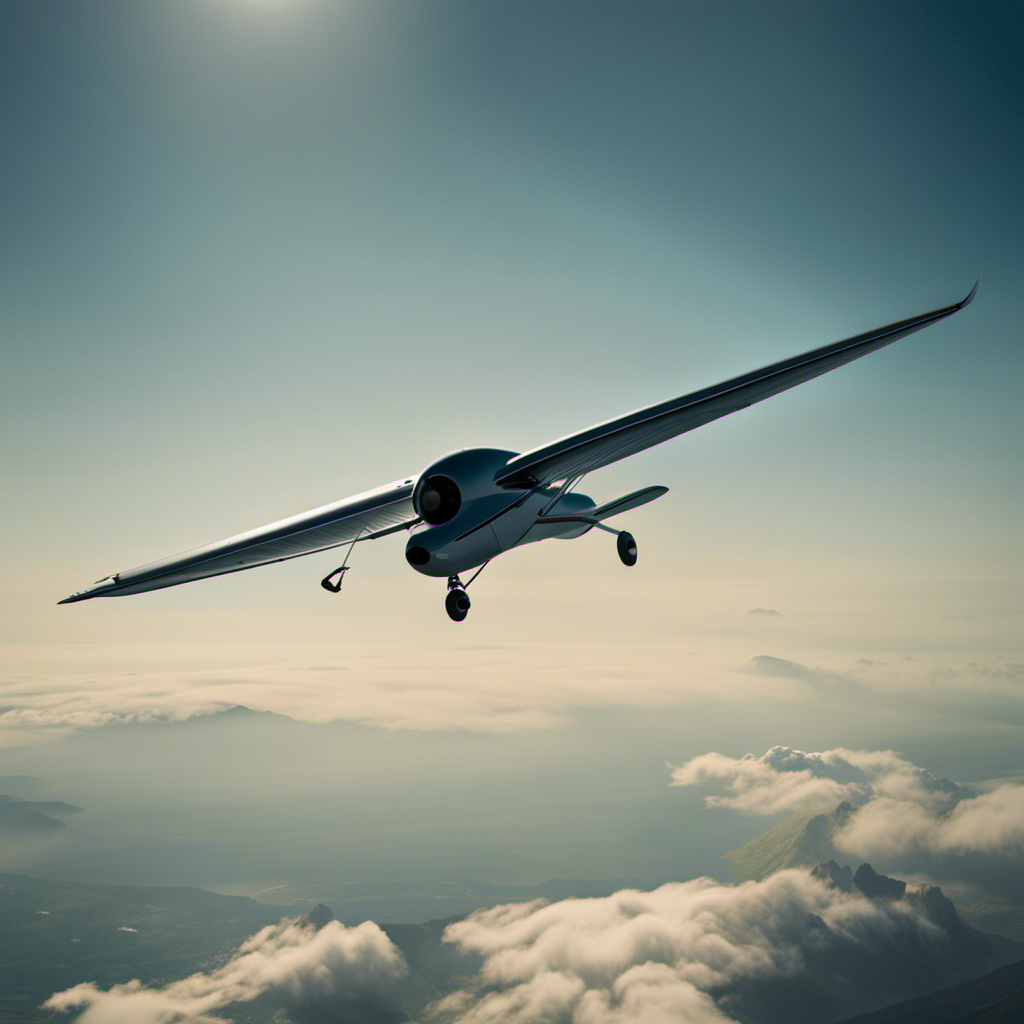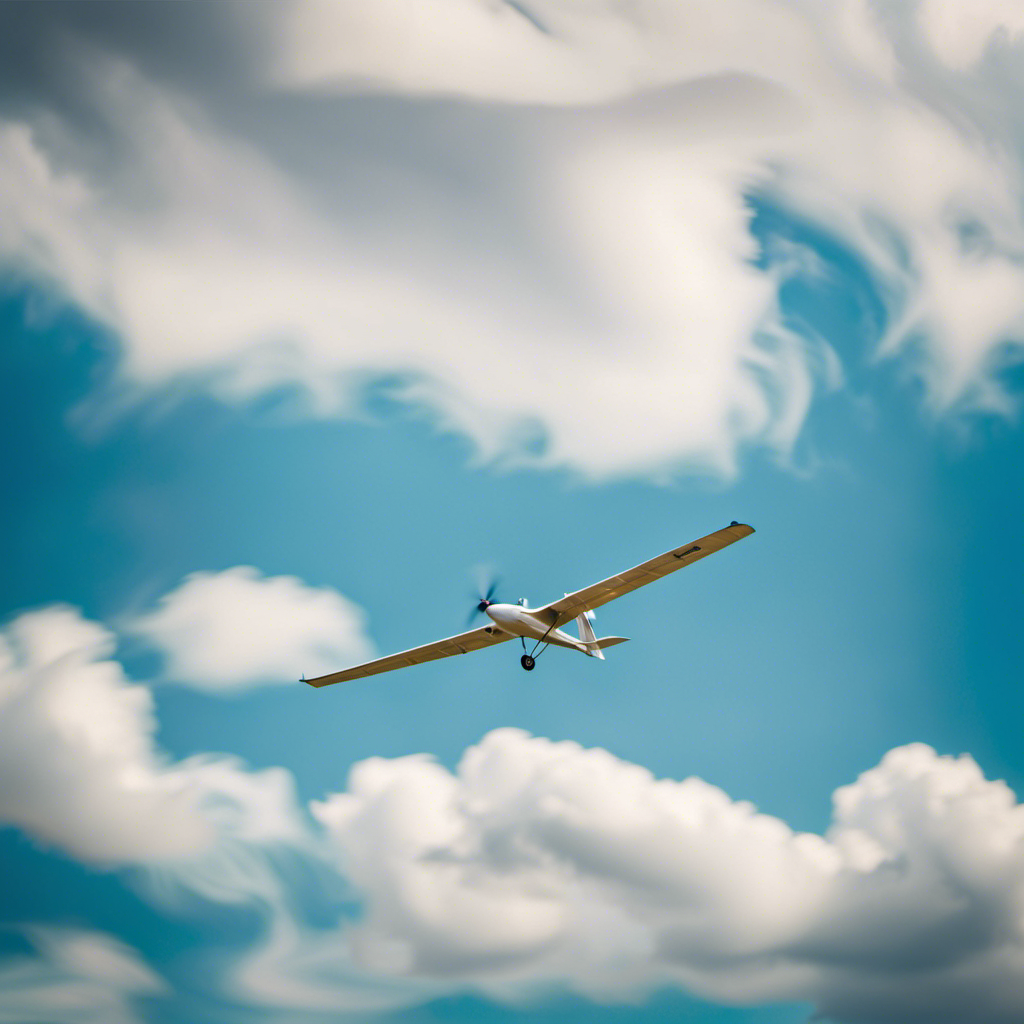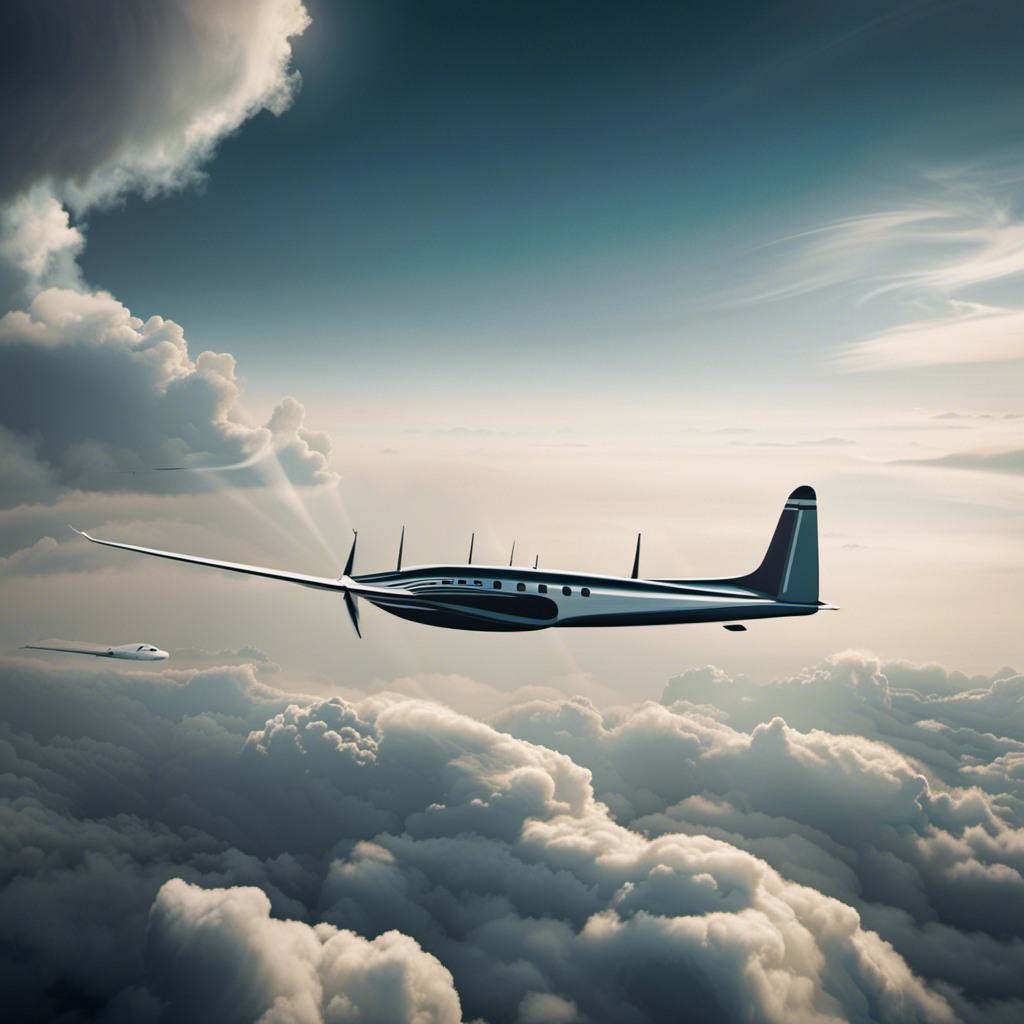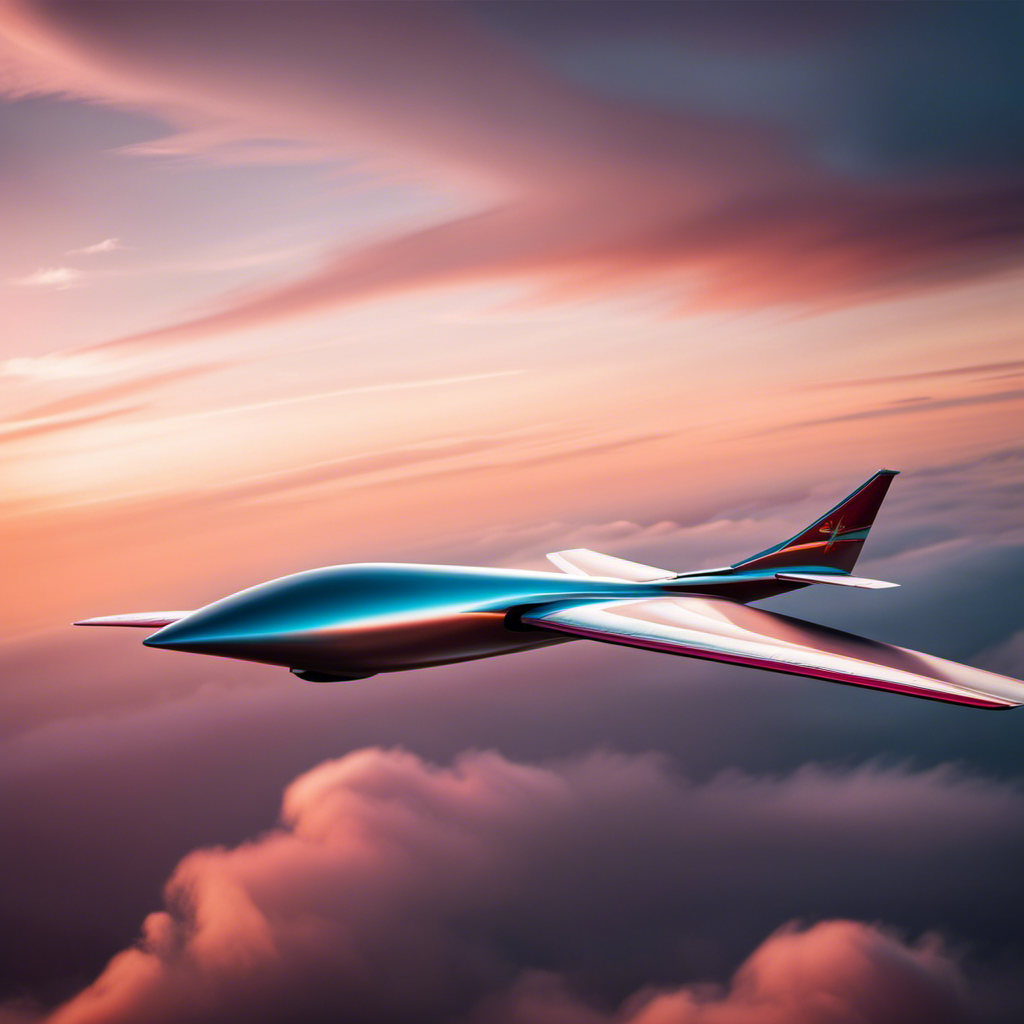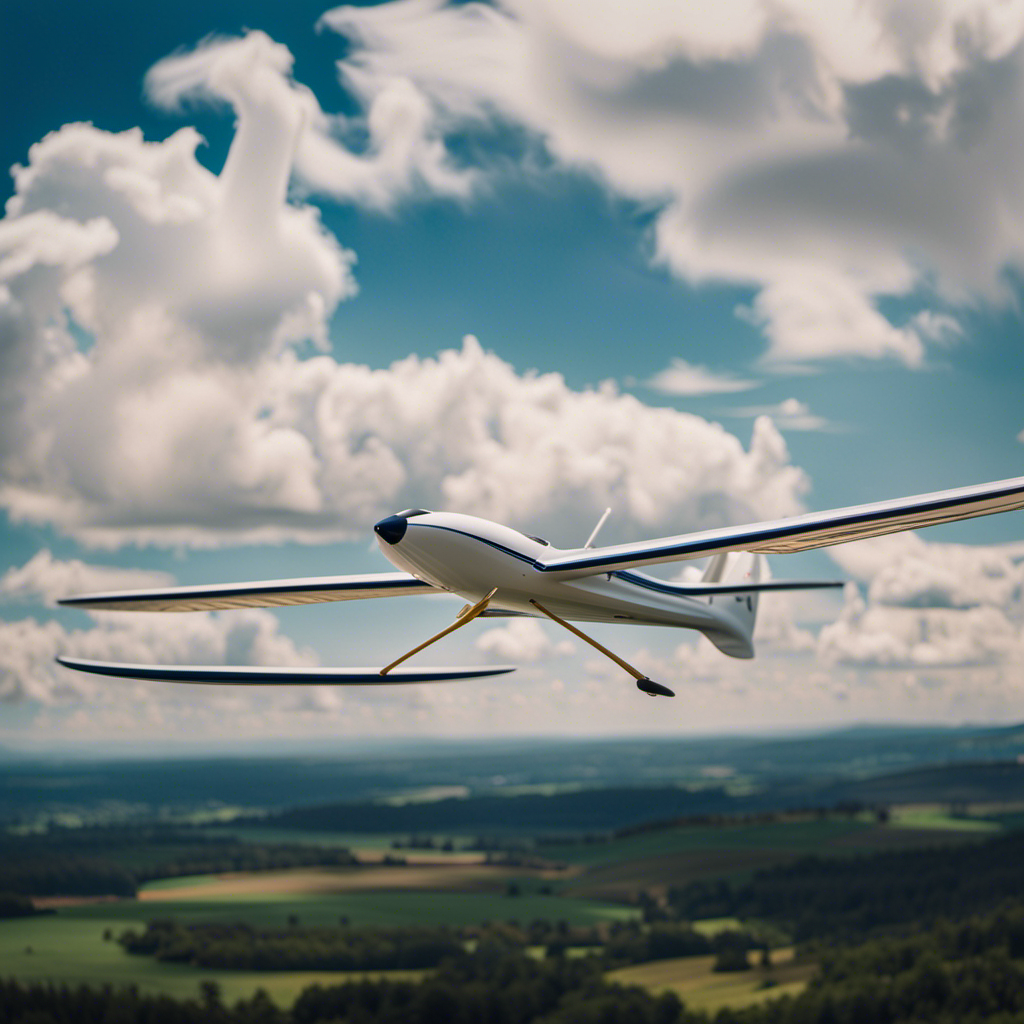You may be wondering, “Can I really learn to pilot a glider?” Well, let me confirm for you, my friend, the answer is a resounding yes!
You, as a normal person, can indeed take to the skies in a glider. It’s not some distant dream reserved for the elite few.
With the right training and a bit of determination, you can experience the sheer thrill of soaring through the air, free as a bird.
So buckle up, because we’re about to embark on an exhilarating journey into the world of glider flying.
Key Takeaways
- Building confidence and skills through solo flights
- Advancing to more complex flight maneuvers and techniques
- Tracking progress and meeting proficiency requirements
- Obtaining a glider pilot license and enjoying the benefits and privileges of glider flying
The Basics of Glider Flying
Flying a glider requires a solid understanding of the basics and a trained pilot to operate it safely. Glider flight techniques are essential to master in order to control the aircraft effectively. One important technique is thermaling, where pilots use rising air currents to gain altitude. By circling within these updrafts, glider pilots can stay aloft for extended periods.
Safety precautions are also crucial in glider flying. Before each flight, pilots must carefully inspect the glider, checking for any signs of damage or malfunction. They must also ensure they have the proper safety equipment, such as parachutes and emergency communication devices. Adhering to established flight procedures and maintaining situational awareness are vital to prevent accidents.
With a thorough understanding of glider flight techniques and strict adherence to safety precautions, one can safely enjoy the exhilarating experience of flying a glider. Transitioning into finding a glider flight school, it is important to undergo proper training to develop the necessary skills.
Finding a Glider Flight School
When it comes to pursuing glider flying lessons, it’s crucial to embark on the journey with a reputable flight school. Researching and choosing a flight school that has a strong track record, experienced instructors, and proper certifications will ensure a safe and effective learning experience.
Additionally, understanding the requirements and costs associated with glider flying lessons is essential in order to plan and budget accordingly. Exploring different training programs and certifications will also enable individuals to find the best fit for their goals and aspirations in the world of glider flying.
Researching and choosing a reputable flight school
Before you start researching flight schools, it’s important to consider their reputation and choose a reputable one. When comparing training programs, keep in mind the following:
-
Safety: Ensure the flight school has a strong safety record and adheres to strict safety protocols. Your well-being should be their top priority.
-
Experience: Look for a school with experienced instructors who have a proven track record of successful training. Their expertise will greatly impact your learning experience.
-
Facilities: Check if the flight school has well-maintained aircraft and modern training facilities. Having access to quality resources will enhance your training.
-
Reviews: Read reviews and testimonials from past students to get a sense of their overall satisfaction and success rate. Positive reviews indicate a reputable flight school.
Understanding the requirements and costs of glider flying lessons is the next crucial step towards realizing your dream of flying.
Understanding the requirements and costs of glider flying lessons
One important aspect to consider when starting glider flying lessons is the cost involved. As a normal person interested in flying a glider, understanding the requirements and costs is crucial. Here is a breakdown of the typical costs and requirements for glider flying lessons:
| Requirements | Costs |
|---|---|
| Minimum age of 14 | Varies depending on location and flight school |
| Medical certificate | Approximately $100 |
| Ground school training | $500 – $1,000 |
| Flight training | $200 – $300 per hour |
These costs may seem daunting at first, but keep in mind that glider flying is an incredible experience that can be enjoyed for a lifetime. By investing in proper training, you will gain the knowledge and skills necessary to fly a glider safely and confidently.
Understanding the requirements and costs of glider flying lessons is just the first step in your journey. Now, let’s explore different training programs and certifications that can help you achieve your goal of becoming a glider pilot.
Exploring different training programs and certifications
To fully explore your options for glider flying training programs and certifications, it’s important to research and compare the different offerings available. Here are three key considerations when exploring these options:
-
Alternative training methods: Some programs offer unique approaches to glider flying training, such as using flight simulators or virtual reality technology. These alternative methods can provide a more immersive and interactive learning experience.
-
Exploring advanced glider flying techniques: Look for programs that go beyond the basics and offer training in advanced techniques like thermalling, ridge soaring, and cross-country flying. These skills will enhance your abilities as a glider pilot and allow you to take on more challenging flights.
-
Certifications and endorsements: Different programs may offer various certifications and endorsements, such as solo flight authorization, aerobatic endorsements, or instructor ratings. Consider your long-term goals and choose a program that can provide the necessary certifications and endorsements to support your aspirations in glider flying.
Ground School and Pre-Flight Training
You’ll need to complete ground school and pre-flight training before you can fly a glider. Ground handling is an essential part of this training, teaching you how to maneuver the glider on the ground safely and efficiently. This includes learning how to properly attach and detach the glider from the towing vehicle, as well as how to taxi and park the glider.
Additionally, you will also learn about weather considerations, which are crucial for safe glider operations. Understanding weather patterns, wind patterns, and the effects of different weather conditions on glider flight is essential for making informed decisions before taking off.
Once you have mastered the ground school and pre-flight training, you will be ready to move on to the hands-on training in the cockpit, where you will put your knowledge into practice.
Hands-On Training in the Cockpit
Once you’re in the cockpit, you’ll get hands-on training that will teach you the essential skills needed for flying a glider.
Cockpit safety is a top priority, and you’ll learn about the proper use of safety equipment, such as seat belts and harnesses, as well as how to secure loose items to prevent them from becoming hazards during flight.
In addition, you’ll become familiar with the emergency procedures specific to glider flying, including how to handle situations like canopy failures or mid-air collisions. These skills are crucial for ensuring your safety and the safety of others while in the air.
As you gain proficiency in these areas, you’ll be ready to progress to the next phase of training: solo flight.
Solo Flight and Progression
As a pilot, building confidence and skills through solo flights is a crucial step in the progression of my training. It allows me to apply the knowledge I have gained during the hands-on training in the cockpit and develop a deeper understanding of the aircraft and its capabilities.
Advancing to more complex flight maneuvers and techniques further enhances my abilities, pushing me to master a wider range of skills and become a more proficient pilot.
Throughout this process, tracking my progress and meeting proficiency requirements ensures that I am constantly improving and meeting the standards set forth by aviation authorities.
Building confidence and skills through solo flights
Don’t worry, you can boost your confidence and improve your skills by taking solo flights in a glider. It may seem intimidating at first, but with practice, you will become more comfortable and proficient in the air. Here are some ways solo flights can help in building confidence and developing skills:
-
Enhanced decision-making abilities: Flying solo requires you to make critical decisions on your own, allowing you to develop your judgment and decision-making skills.
-
Increased situational awareness: Without an instructor guiding you, you become more focused on your surroundings, improving your ability to assess and react to different flight conditions.
-
Improved aircraft handling: Solo flights give you the opportunity to practice and refine your control of the glider, enhancing your flying skills.
-
Self-reliance and independence: Flying alone instills a sense of self-reliance and confidence in your abilities, as you rely solely on your own knowledge and skills.
-
Heightened understanding of aerodynamics: Through solo flights, you gain a deeper understanding of how the glider responds to different aerodynamic forces, enabling you to make more precise maneuvers.
Advancing to more complex flight maneuvers and techniques
To progress in gliding, you can develop your skills and confidence by mastering more complex flight maneuvers and techniques.
As you become more comfortable with basic glider operations, you can start exploring advanced flight maneuvers and aerobatic techniques. These maneuvers include stalls, spins, loops, and rolls, which require precise control inputs and a deep understanding of aerodynamics.
Stalls involve intentionally exceeding the critical angle of attack, causing a temporary loss of lift.
Spins are controlled descents characterized by autorotation.
Loops and rolls require coordinated pitch, roll, and yaw inputs to execute smooth and controlled maneuvers.
By practicing these advanced flight maneuvers, you will enhance your piloting abilities and gain a deeper understanding of the glider’s capabilities.
This will set the foundation for tracking progress and meeting proficiency requirements, ensuring your continued growth as a glider pilot.
Tracking progress and meeting proficiency requirements
You should regularly assess your performance and meet the proficiency requirements to track your progress as a glider pilot. Tracking progress and meeting proficiency requirements are crucial aspects of becoming a skilled and competent pilot. Here are three key reasons why it is important:
-
Self-improvement: Regularly assessing your performance allows you to identify areas that need improvement. By meeting proficiency requirements, you can track your progress and focus on developing the necessary skills and knowledge to become a better pilot.
-
Safety: Tracking progress and meeting proficiency requirements ensure that you maintain a high level of safety in your flying. By regularly evaluating your performance, you can address any weaknesses or deficiencies and ensure that you are consistently meeting the standards required for safe glider operation.
-
Goal-setting: Monitoring your progress and meeting proficiency requirements provide a clear framework for setting goals and achieving milestones. It allows you to track your development as a glider pilot and work towards obtaining your glider pilot license and beyond.
Glider Pilot License and Beyond
If you’re interested in flying gliders beyond just a recreational level, obtaining a glider pilot license is a necessary step. A glider pilot license allows you to fly gliders for personal enjoyment, as well as for competitions and training purposes. It demonstrates your knowledge of glider flight regulations and ensures that you have the necessary skills to safely operate a glider.
One of the benefits of glider flying is the freedom and flexibility it offers. Unlike powered aircraft, gliders rely solely on natural forces such as thermals and wind currents to stay aloft. This allows for longer flights and the opportunity to explore the skies in a more serene and environmentally friendly manner.
To give you a clearer picture, here is a table summarizing the requirements and privileges of a glider pilot license:
| Requirements | Privileges |
|---|---|
| Minimum age: 16 years old | Fly gliders solo or with passengers |
| Pass written and practical exams | Participate in glider competitions |
| Log sufficient flight hours | Instruct other pilots |
| Complete a flight training program | Fly cross-country flights |
| Maintain medical fitness | Join glider clubs and organizations |
Frequently Asked Questions
What is the minimum age requirement to fly a glider?
The minimum age requirement to fly a glider is determined by safety regulations. These regulations ensure that individuals have the necessary maturity and judgment to operate a glider safely.
Are there any physical fitness requirements to become a glider pilot?
To become a glider pilot, one must meet certain physical limitations and health requirements. These include a good level of physical fitness, adequate visual acuity, and the ability to withstand the demands of flying for extended periods.
How much does it cost to get a glider pilot license?
Getting a glider pilot license can cost around $5,000 to $10,000. However, financial assistance options like scholarships and grants are available. For example, John received a scholarship that covered his training expenses.
Can I fly a glider if I wear glasses or contact lenses?
Yes, I can fly a glider with vision correction. Wearing contact lenses while flying a glider offers advantages such as improved peripheral vision, reduced glare, and better depth perception, enhancing overall flying performance.
Are there any restrictions on where I can fly a glider?
Restricted airspace and national parks pose limitations on glider flying. It is crucial to be aware of these restrictions to ensure compliance with regulations. Familiarize yourself with airspace classifications to navigate safely.
Conclusion
In conclusion, flying a glider is an achievable goal for any normal person with the passion and dedication to learn. With the right training and guidance from a certified glider flight school, anyone can become a skilled glider pilot.
Interestingly, did you know that gliders can stay aloft for hours and cover hundreds of miles without the need for an engine? This fascinating statistic showcases the incredible capabilities of gliders and the thrilling experiences that await those who choose to pursue this exhilarating sport.
So why not take to the skies and discover the joy of glider flying for yourself?
Orion, better known as “Jetstream,” is the voice that brings the stories of the skies to life. His fascination with aviation began at a young age, sparked by his father’s tales of flying and adventure. Orion’s journey into the world of gliding was serendipitous, and from the moment he took his first glider flight, he knew he had found his calling.
